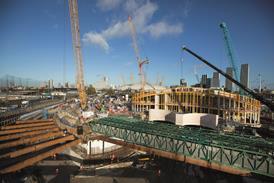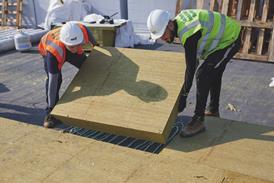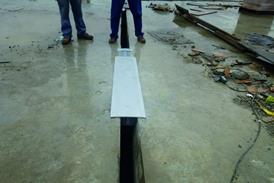- News
Regulations latest
All the latest updates on building safety reform
- Focus
- Comment
- Data
- Programmes
- CPD
- Events
- Jobs
- Subscribe
- Building Boardroom
Cost model: Labs in the sky

Record levels of investment into the life science sector and an increasingly limited supply of space have encouraged laboratory buildings to enter the high-rise realm

01 / Burgeoning demand, constrained supply
The pandemic put a spotlight on science, and in 2021 life science companies around the world raised a record-breaking £113bn in investment. The US is arguably still at the forefront, but the UK life sciences sector is growing fast with a record £4.5bn invested in 2021 (60% up on the previous year) and it has seen a boom in start-ups and spin-outs, with a further £20bn ready to invest in property development: ready but waiting for space.
Demand is outstripping supply, with developers looking to deliver the specialist facilities needed as quickly as possible, investing time in understanding the needs of the various life science sub-sectors and how base buildings can be enabled to suit a range of potential occupiers efficiently and cost-effectively.
According to Bidwells, available space in Oxford and Cambridge is “close to zero”, while London has its planning and logistical challenges in accommodating new development. These three centres forming the “golden triangle” are all constrained by their green belts, too.
This leaves developers who are able to deliver life science facilities in a strong position but, equally, tenants are demanding high-quality environments that not only meet their specialist requirements but also provide the amenities found in contemporary office buildings.
So, a need for significant quantities of specialist and collaborative space with various support spaces and amenities, against a background of constrained supply: enter the tall laboratory building.
Read more…
This is PREMIUM content, available to subscribers only
You are not currently logged in. Subscribers may LOGIN here.
SUBSCRIBE to access this story

SUBSCRIBE for UNLIMITED access to news and premium content
A subscription will provide access to the latest industry news, expert analysis & comment from industry leaders, data and research - including our popular annual league tables. You will receive:
- Print/digital issues delivered to your door/inbox
- Unlimited access to building.co.uk including our archive
- Print/digital supplements
- Newsletters - unlimited access to the stories behind the headlines
Subscribe now
Get access to premium content subscribe today



















